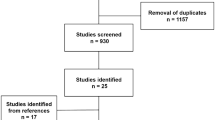Abstract
We made a comparative cohort study in patients suffering from tibial pseudoarthrosis, all of whom were treated by intramedullary nailing. We divided patients into two groups: one treated by intramedullary nailing only (control group) and the other by intramedullary nailing combined with pulsed electromagnetic fields (PEMFs). The study included 57 cases of tibial pseudoarthrosis in 57 patients from February 1987 to February 2002. Pseudoarthrosis was treated surgically in all cases (Grosse-Kempf dynamic intramedullary nailing). This was combined with PEMFs in 22 cases. The average age was 38.3 years (range 14–89 years) and the average duration of follow-up was 27.2 months (range 12–48 months). Forty-nine fractures (86%) healed and eight (14%) did not. Of the group treated with PEMFs, 20 (91%) healed and two (9%) did not; from the group that did not receive PEMF (35), 29 (83%) healed compared to six (17%) that did not. The relationship between union and use of PEMFs, and between time to union and use of PEMFs was clinically relevant. PEMFs are useful when treating tibial pseudoarthrosis. Its noninvasive nature means that there are more complication-free unions.
Similar content being viewed by others
References
Aaron RK, Ciombor DMcK, Simon BJ (2004) Treatment of nonunions with electric and electromagnetic fields. Clin Orthop 419:21–29
Aaron RK, Ciombor DMcK, Simon BJ (2004) Stimulation of growth factor synthesis by electric and electromagnetic fields. Clin Orthop 419:30–37
Adair RK (1991) Biological effects on the cellular level of electric field pulses. Health Phys 61:395–399
Anderson JC, Erikson C (1970) Piezoelectric properties of dry and wet bone. Nature 227:491–492
Bassett CAL, Valdés MG, Hernandez E (1982) Modification of fracture repair with selected pulsing electromagnetic fields. J Bone Jt Surg 64-A:888
Bassett CAL, Mitchell SN, Gaston SR (1981) Treatment of ununited tibial diaphyseal fractures with pulsing electromagnetic fields. J Bone Jt Surg 63-A:511–523
Brighton C, Shaman P, Heppenstall B (1995) Tibial nonunion treated with direct current; capacitive coupling or bone graft. Clin Orthop 321:223–234
Brighton CT, Pollack SR (1984) Treatment of nonunion of the tibia with a capacitively coupled electrical field. J Trauma 24:153–155
Brighton CT (1981) Treatment of nonunion of the tibia with constant direct current: J Trauma 21(3):189–195
Brighton CT, Pollack SR (1985) Treatment of recalcitrant nonunion of the tibia with capacitively coupled electric field. J Bone Jt Sur 67-A:577–585
Cooper MS (1995) Membrane potential perturbations induced in tissue cells by pulsed electric fields. Bioelectromagnetic 1995(16):255–262
Friendemberg ZB, Brighton CT (1996) Bioelectric potentials in bone. J Bone Jt Surg 48-A:915–923
Fukada E, Yatsuda J (1957) On the piezoelectric effect of bone. J Physio Soc Japan 12:1158–1162
Heckman JD et al (1981) Nonunion treatment with pulsed electromagnetic fields. Clin Orthop 161:58–66
Heppenstall RB et al (1984) Prognostic factors in nonunion of the tibia: an evaluation of 185 cases treated with constant direct current. J Trauma 24(9):790–795
Lavine LS, Grodzinsky AJ (1987) Electrical Stimulation of repairs of bone. J Bone Jt Surg 69-A:626
López-Durán L, Yageya J (1980) Bioelectric potentials after fracture of the tibia. Acta Orthop Scand 51:601–605
Scott G, King JB (1994) A prospective, double-blind trial of electrical capacitive coupling in the treatment of non-union of long bone. J Bone Joint Surg 76A:820–825
Sharrard WJW (1990) A doubled-blind trial of pulsed electromagnetic fields for delayed union of tibial fractures. J Bone Joint Surg B 72:347–355
Simonis RB, Parnell EJ, Ray PS, Peacock JL (2003) Electrical treatment of tibial non-union: a prospective, randomised, double-blind trial. Injury 34(5):357–362
Skerry TM, Pead MJ, Lanyon LE (1991) Modulation of bone loss during disuse by pulsed electromagnetic fields. J Orthop Res 9:600–608
Sledge S, Johnson KD, Henry MB, Watson JT (1989) Intramedullary nailing with reaming to treat non-union of the tibia. J Bone Joint Surg 71A:1004–1019
Templeman D, Thomas M, Varecka T, Kyle R (1995) Exchange reamed intramedullary nailing for delayed union and non-union of the tibia. Clin Orthop 315:169–175
Wang Z, Clark C, Brighton C (2006) Up-regulation of bone morphogenetic proteins in cultured murine bone cells with use of specific electric fields. J Bone Joint Surg 88-A:1053–1065
Author information
Authors and Affiliations
Corresponding author
Rights and permissions
About this article
Cite this article
Cebrián, J.L., Gallego, P., Francés, A. et al. Comparative study of the use of electromagnetic fields in patients with pseudoarthrosis of tibia treated by intramedullary nailing. International Orthopaedics (SICOT) 34, 437–440 (2010). https://doi.org/10.1007/s00264-009-0806-1
Received:
Revised:
Accepted:
Published:
Issue Date:
DOI: https://doi.org/10.1007/s00264-009-0806-1




